Eating a mountain for coal
New images released by NASA reveal the conversion of mountains and forests in southern West Virginia to a giant surface mine.
The time-lapse shots from 1984 to 2009 show the process of mountaintop removal in Boone County, West Virginia. The images show forests being stripped, valleys filled, and giant craters excavated in the process of mining thin seams of coal at Hobet mine.
“These natural-color (photo-like) images document the growth of the Hobet mine as it moves from ridge to ridge between 1984 to 2009,” states NASA’s Earth Observatory.
The mine area would grow to more than 10,000 acres over the life of the photo series, which is based on data from NASA’s Landsat 5 satellite.
NASA’s Earth Observatory describes the images:
-
The natural landscape of the area is dark green, forested mountains, creased by streams and indented by hollows. The active mining areas appear off-white, while areas being reclaimed with vegetation appear light green. A pipeline roughly bisects the images from north to south. The town of Madison, lower right, lies along the banks of the Coal River.
In 1984, the mining operation is limited to a relatively small area west of the Coal River. The mine first expands along mountaintops to the southwest, tracing an oak-leaf-shaped outline around the hollows of Big Horse Creek and continuing in an unbroken line across the ridges to the southwest. Between 1991 and 1992, the mine moves north, and the impact of one of the most controversial aspects of mountaintop mining—rock and earth dams called valley fills—becomes evident.
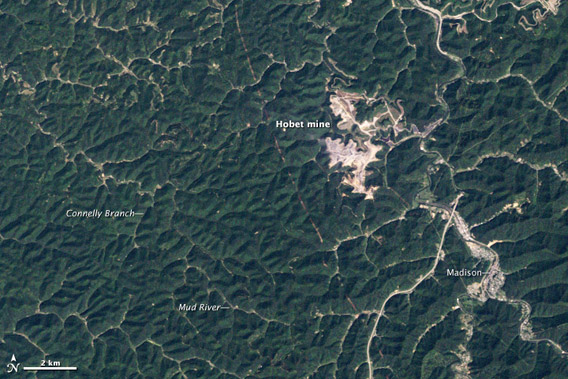
1984
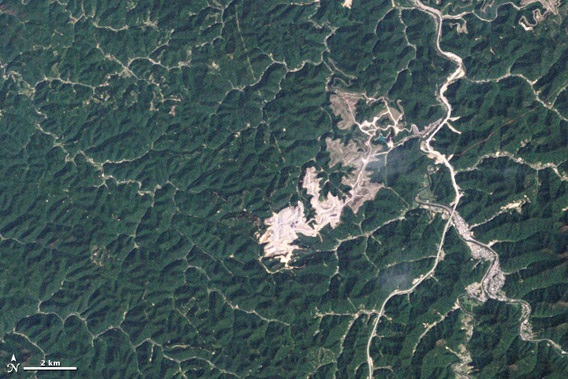
1988
-
The law requires coal operators to try to restore the land to its approximate original shape, but the rock debris generally can’t be securely piled as high or graded as steeply as the original mountaintop. There is always too much rock left over, and coal companies dispose of it by building valley fills in hollows, gullies, and streams. Between 1991 and 1992, this leveling and filling in of the topography becomes noticeable as the mine expands northward across a stream valley called Stanley Fork.
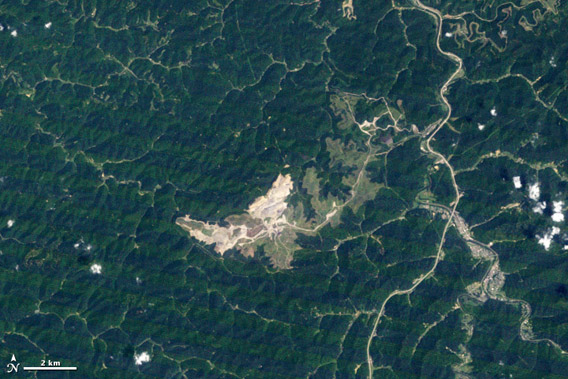
1992
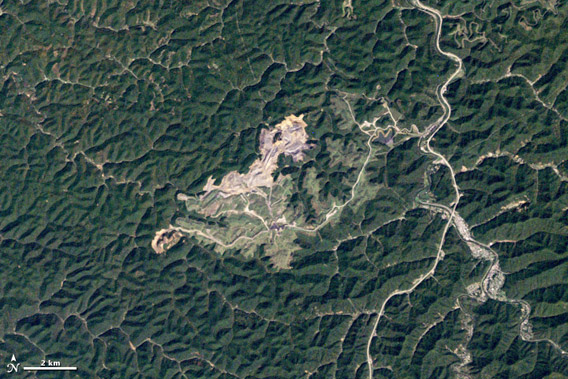
1996
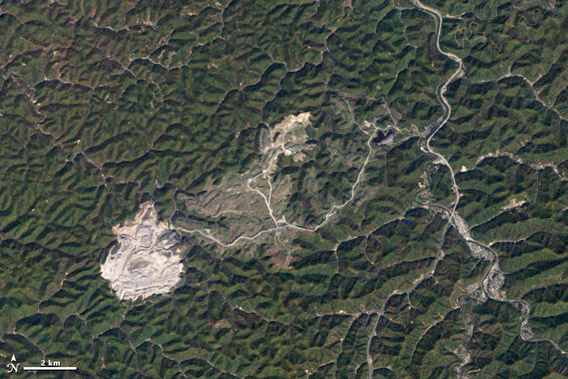
2000
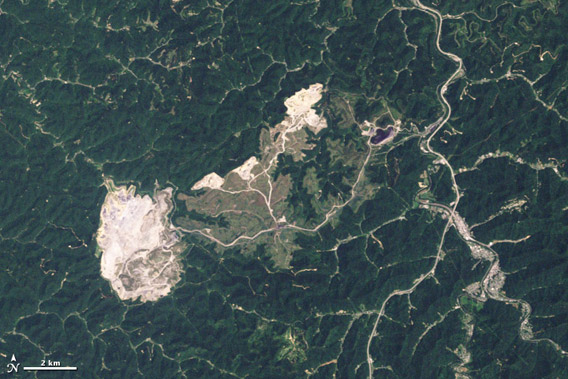
2004
-
The most dramatic valley fill that appears in the series, however, is what appears to be the near-complete filling of Connelly Branch from its source to its mouth at the Mud River between 1996 and 2000. Since 2004, the mine has expanded from the Connelly Branch area to the mountaintops north of the Mud River. Significant changes are apparent to the ridges and valleys feeding into Berry Branch by 2009. Over the 25-year period, the disturbed area grew to more than 10,000 acres (15.6 square miles).
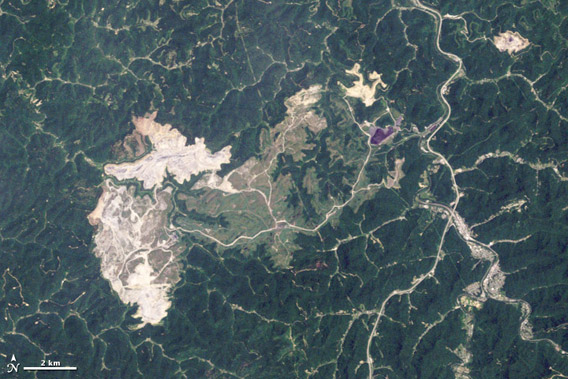
2009
Due to its destructive nature, as well as pollution (including acid rain and greenhouse gas emissions) associated with coal burning, mountaintop removal is increasingly a target of environmental groups. Several high-profile protests during the past year have resulted in arrests and widespread media coverage and commentary.
In January a group of prominent scientists called upon the Obama Administration to ban mountaintop removal.
“The scientific evidence of the severe environmental and human impacts from mountaintop mining is strong and irrefutable,” lead author Dr. Margaret Palmer of the University of Maryland Center for Environmental Science said in a statement. “Its impacts are pervasive and long lasting and there is no evidence that any mitigation practices successfully reverse the damage it causes.”
Related articles
Bill Gates: ban coal and invest in clean energy technology
(02/12/2010) The planet needs “energy miracles” to overcome the dual challenges of meeting energy demand and addressing climate change, said Microsoft founder Bill Gates during a speech Friday at the TED Conference in Long Beach, California.
Scientists call for an end to mountaintop removal mining in the US

(01/07/2010) A group of scientists have called for the Obama Administration to place a moratorium on infamous mountain top mining due to “growing scientific evidence” of severe environmental degradation and serious impacts on human health, including cancer. The article, published in Science, is written by a dozen influential scientists, including hydrologists, ecologists, and engineers.
US subsidies of oil and coal more than double the subsidies of renewable energy
(09/21/2009) During the fiscal years of 2002-2008 the United States handed out subsidies to fossil fuel industries to a tune of 72 billion dollars, while renewable energy subsidies, during the same period, reached 29 billion dollars.
(12/19/2008) Governments have greatly overestimated global coal reserves according to estimates presented by a geologist at the annual meeting of the American Geophysical Union in San Francisco.
Al Gore calls for “civil disobedience” against new coal plants
(09/28/2008) Former Vice President and Nobel Prize winner, Al Gore, told the audience at the Clinton Global Initiative that the moment had arrived for civil disobedience against new coal plants.
CO2 emissions accelerate 400% as world turns to dirtier fuels
(09/26/2008) Atmospheric carbon dioxide levels rose at a record clip in 2007, according to the Global Carbon Project’s annual overview of the greenhouse gas.







